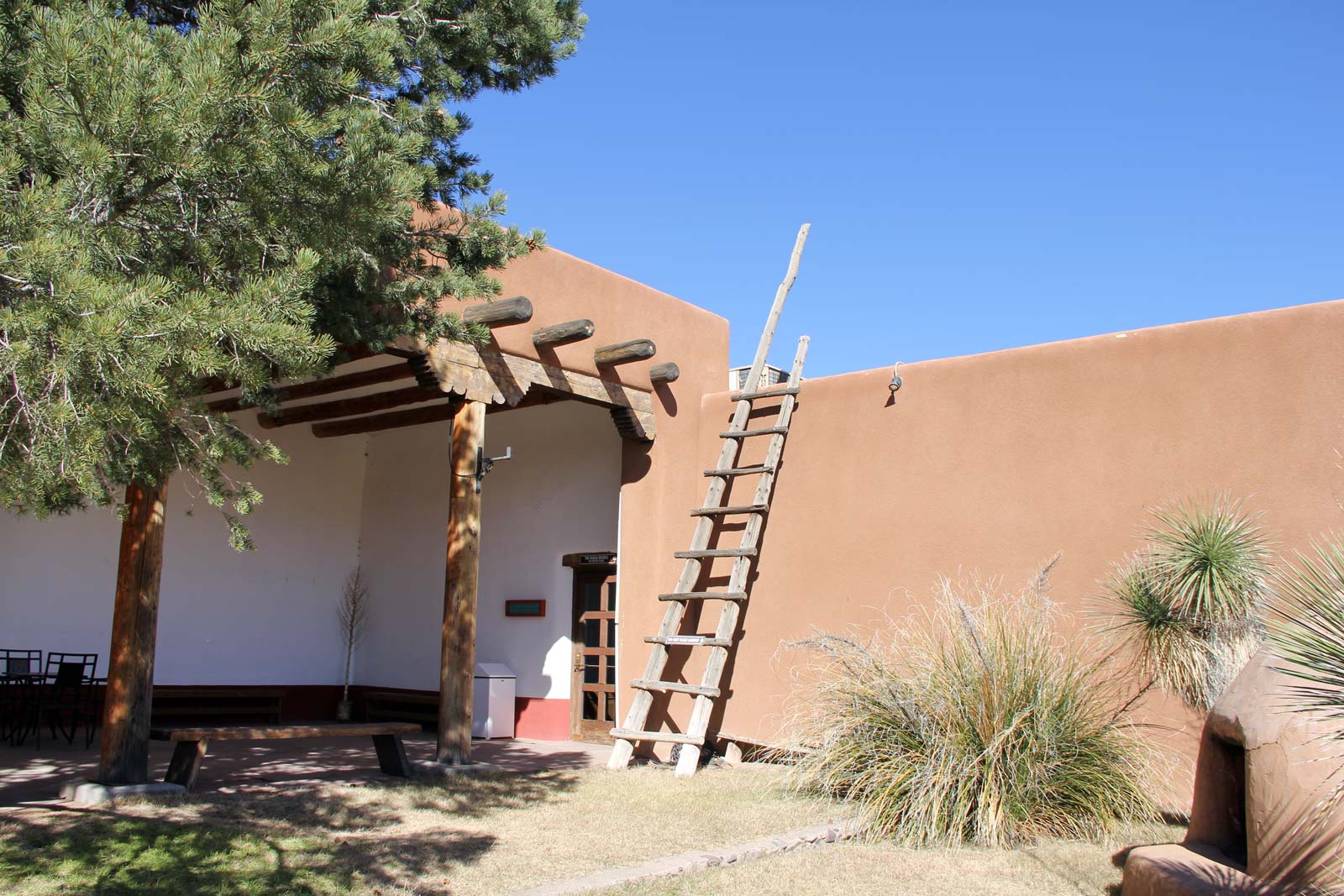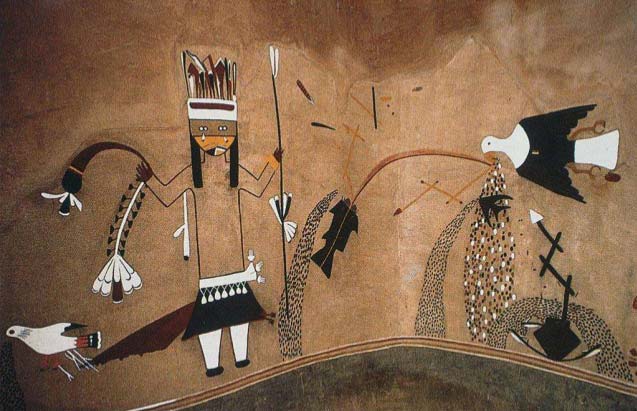
Photo: November 7, 2018.
 Coronado Historic Site WPA-built Visitor Center and Museum Administration.
The museum includes a murals gallery; the image at left is from
Wikipedia[1].
Coronado Historic Site WPA-built Visitor Center and Museum Administration.
The museum includes a murals gallery; the image at left is from
Wikipedia[1].
This gallery houses 14 panels of paintings that were found in a square Kiva located in the South Plaza of Kuaua Pueblo. The paintings are almost 600 years old, and have been masterfully preserved. The walls that the paintings were found on had over 85 layers, 17 of which were covered in paintings.[2] These murals represent some of the finest examples of Pre-Columbian art ever found in the United States[3]. The paintings' salvation owes thanks to human ingenuity, New Deal money, and the leadership of Edgar Lee Hewett, a founder of the Museum of New Mexico[5].
References
- Coronado Historic Site, Wikipedia, accessed 22 November 2018.
- The Friends of Coronado Historic Site website, accessed 22 November 2018.
- Coronado Historic Site website, New Mexico Historic Sites, accessed 22 November 2018.
- Jim Farber, New Mexico's Michelangelo: Ma-Pe-Wi and the Coronado Historic Site, website accessed 23 November 2018: "It was not until the 1930s that the federal government (through the Works Projects Administration) gave money to excavate the site."
- Kate Nelson, Kiva Revival - Restored frescoes at the Coronado Historic Site evoke anew the sacred mysteries of the Puebloan past, New Mexico Magazine, March 2014; website accessed 23 November 2018: "In 1940, Coronado State Monument, now called Coronado Historic Site, opened for public viewing, quickly becoming a star of the state's museum system. It boasted the only painted kiva open to the public, and demostrated how closely Native peoples tied their lives to the earth."
- Robert Preucel and Frank G. Matero, Placemaking on the Northern Rio Grande - A View from Kuaua, Chapter 4 of Archaeologies of Placemaking: Monuments, Memories, and Engagement in Native North America by Patricia E. Rubertone, Routlege (2009): "[Edgar Lee] Hewett proposed to excavate Kuaua in order to establish the location of Coronado's encampment and to excavate Puaray to look for the famous wall murals. He intended to accomplish this work in time for the celebration of the Coronado Cuarto Centennial in 1940. In June 1934, he began a five-year excavation project sponsored by the University of New Mexico, the Museum of New Mexico, and the School of American Research, and funded by federal monies from Federal Emergency Relief Administration, Works Progress Administration, and Nation[al] Youth Administration relief programs."